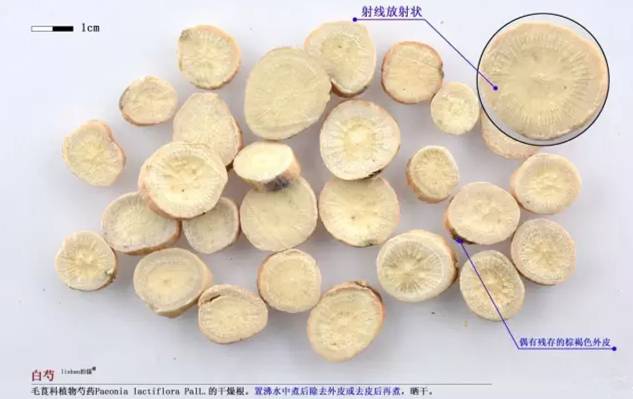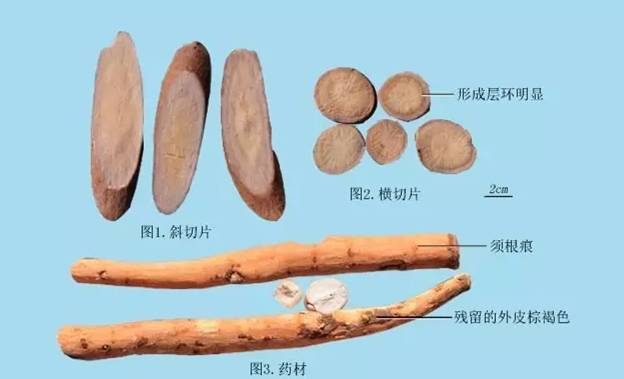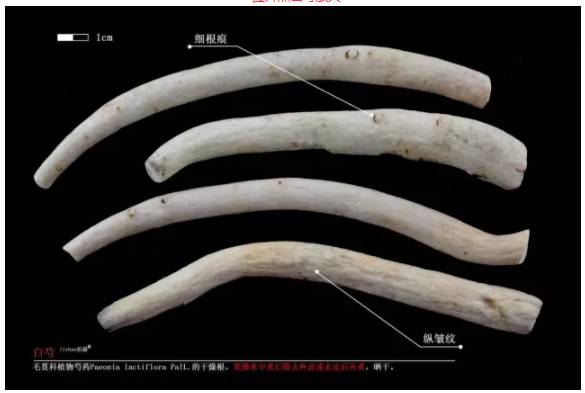
Bai Shao
PAEONIAE RADIX ALBA
Bai Shao (白芍, bai shao) also known as: Shao Yao, White Peony, Bo Shao, Bo Bai Shao, Hang Shao, Hang Bai Shao, Chao Bai Shao, Jiao Bai Shao, Jiu Bai Shao, Hua Hou, Guan Fang, Yan You, Yu Rong, He Li, Yu Dou, Fu Ding, Fu Wang, Yu Kui, Tian Kui. This herb is the dried root of the plant Paeonia lactiflora Pall, belonging to the family Ranunculaceae. It is primarily cultivated in provinces such as Zhejiang, Anhui, Sichuan, Guizhou, and Shandong.

Let’s start with a story
It is said that the famous physician Hua Tuo from the Three Kingdoms period had his yard filled with medicinal herbs. He had deep knowledge of these herbs. One day, he planted a peony given by a friend outside his window and studied it for several days, but found no medicinal value, so he ignored it. One night, as Hua Tuo was dozing off, he heard someone crying outside. He opened his eyes and saw a woman in red standing outside in the moonlight. He quickly got up to check, but found no one, only the red-flowered peony swaying gently in the wind. Curious, he returned inside and woke his wife to tell her what happened. His wife laughed and said, “The Peony girl has shown her spirit. She is unhappy with your indifference.” Hua Tuo replied, “The peony indeed has little use.” His wife said, “Sister Zheng at the village head uses peony root to treat menstrual disorders; many women secretly go to her for help.” Hua Tuo said, “Gynecological issues are my weak point. I will seek Sister Zheng’s advice tomorrow.”
After consulting Sister Zheng, Hua Tuo learned that by using different processing methods, peony root can be made into Bai Shao (White Peony) and Chi Shao (Red Peony). Bai Shao can treat excessive menstruation and dangerous bleeding, while Chi Shao can be used for amenorrhea and traumatic injuries. The dosage for both Bai Shao and Chi Shao is three qian (approximately 9 grams) per dose, decocted in water. The dosage should not be increased to avoid overburdening the liver. Hua Tuo later conducted in-depth research on Bai Shao and discovered that it stops bleeding by nourishing the blood. He believed that bleeding is not merely a matter of uncontrolled blood loss, but rather that there is a “pathogenic factor” in the blood causing it to “run amok”. Therefore, the first step is to nourish the blood; once the blood is well-nourished, menstruation will return to normal, and one should not simply use hemostatic drugs. Bai Shao possesses excellent blood-nourishing properties for gynecological issues.
Hua Tuo was later killed by Cao Cao, and his medical texts were lost. However, some of the content, including the processing methods and effects of Bai Shao and Chi Shao, was passed down through his students.

Having heard the story, let’s look at the key points!
Here are some pure facts~!
Harvesting and Processing
Harvest in summer and autumn, wash clean, remove the head and tail and fine roots, boil in water, then remove the outer skin or peel and boil again, and then dry.

Properties and Channels
Sour, sweet, bitter, slightly cold. Enters the liver and spleen channels.
Identification of Properties
Herb material
It is cylindrical, straight or slightly curved, with flat ends, 5-18 cm long and 1-2.5 cm in diameter. The surface is whitish or light brownish-red, smooth or with longitudinal wrinkles and fine root marks, occasionally with remnants of brownish outer skin. It is solid, not easily broken, with a relatively flat cross-section, whitish or slightly brownish-red, with distinct growth rings and radiating rays. It has a faint odor and a slightly bitter, sour taste.
White Peony slices
They are thin, round slices. The surface is light brownish-red or whitish, smooth. The cut surface is whitish or slightly brownish-red, with distinct growth rings, and slightly raised vein patterns arranged radially.
Fried White Peony
Similar in shape to White Peony slices. The surface is slightly yellow or light brownish-yellow, with occasional scorched spots. It has a faint fragrance.
Wine White Peony
Similar in shape to White Peony slices, with a slightly yellow or light brownish-yellow surface, with occasional scorched spots. It has a faint wine aroma.

Characteristics
This herb is sweet and nourishing, sour and astringent, slightly cold, entering the liver and spleen channels. It nourishes blood, regulates menstruation, softens the liver, alleviates pain, astringes yin, stops sweating, and pacifies liver yang, with slight heat-clearing properties. It is primarily used for symptoms of yin blood deficiency, liver qi stagnation, and yang hyperactivity, as well as for conditions of general weakness and excessive sweating.

Effects
Nourishes blood, regulates menstruation, astringes yin, stops sweating, softens the liver, alleviates pain, and pacifies liver yang.
Indications
(1) Blood deficiency with pale complexion, irregular menstruation, dysmenorrhea, and excessive bleeding.
(2) Yin deficiency with night sweats and spontaneous sweating.
(3) Pain in the chest, hypochondrium, and abdomen due to disharmony between liver and spleen, or pain and stiffness in the limbs.
(4) Headaches and dizziness due to liver yang rising.
Dosage and Administration
For internal use: decocted in water, 5-15 g; or used in pills or powders. Bai Shao is often used fried for nourishing blood and regulating menstruation, while it is used raw for calming the liver and astringing yin.
Precautions
Avoid with Li Lu (Rhizoma Veratri).

(This article is compiled from the Practicing Pharmacist’s textbook, the Chinese Pharmacopoeia (2015 edition), “Commonly Used Chinese Medicine Identification”, and the Hong Kong Baptist University Chinese Medicine Society’s herbal material image database and other online resources!)

Zhen’an County Traditional Chinese Medicine Hospital
Consultation Phone:
MRI, CT Room: 0914-5339877
B-ultrasound and ECG Room: 0914-5360516
Colonoscopy Room: 0914-5327187
Gastroscopy Room: 0914-5360358
Lithotripsy Department: 0914-5327181
Emergency Department: 0914-5360999
Febrile Disease Department: 0914-5360222
Acupuncture and Rehabilitation Department: 0914-5327168
Gynecology: 0914-5327121
Pediatrics: 0914-5338210
Orthopedics: 0914-5361598
Surgery: 0914-5327187
Neurosurgery: 0914-5361028
Otorhinolaryngology: 0914-5360581
Internal Medicine I: 0914-5361568
Internal Medicine II: 0914-5338205
Internal Medicine III: 0914-5338253
Medical Affairs Department: 0914-5360081
General Duty: 13325340282

Scan the QR code to follow health updates and the Zhen’an County Traditional Chinese Medicine Hospital!
Spreading Traditional Chinese Medicine culture

